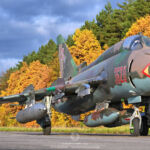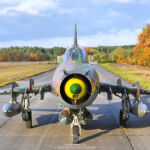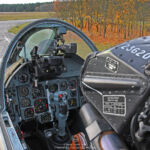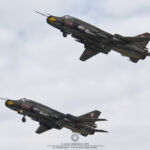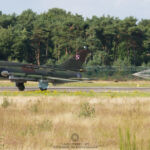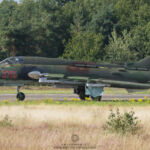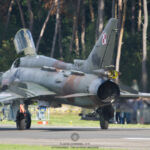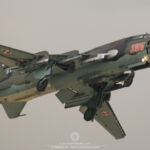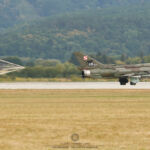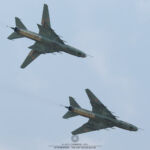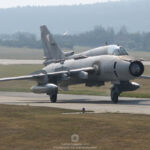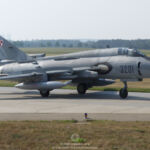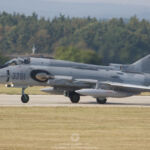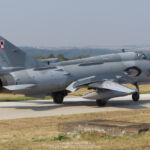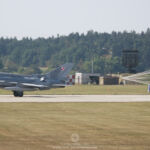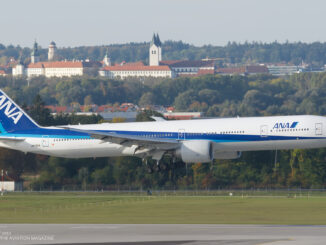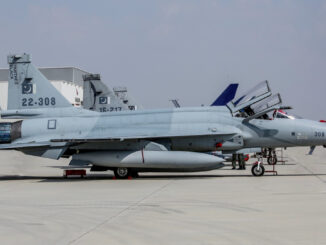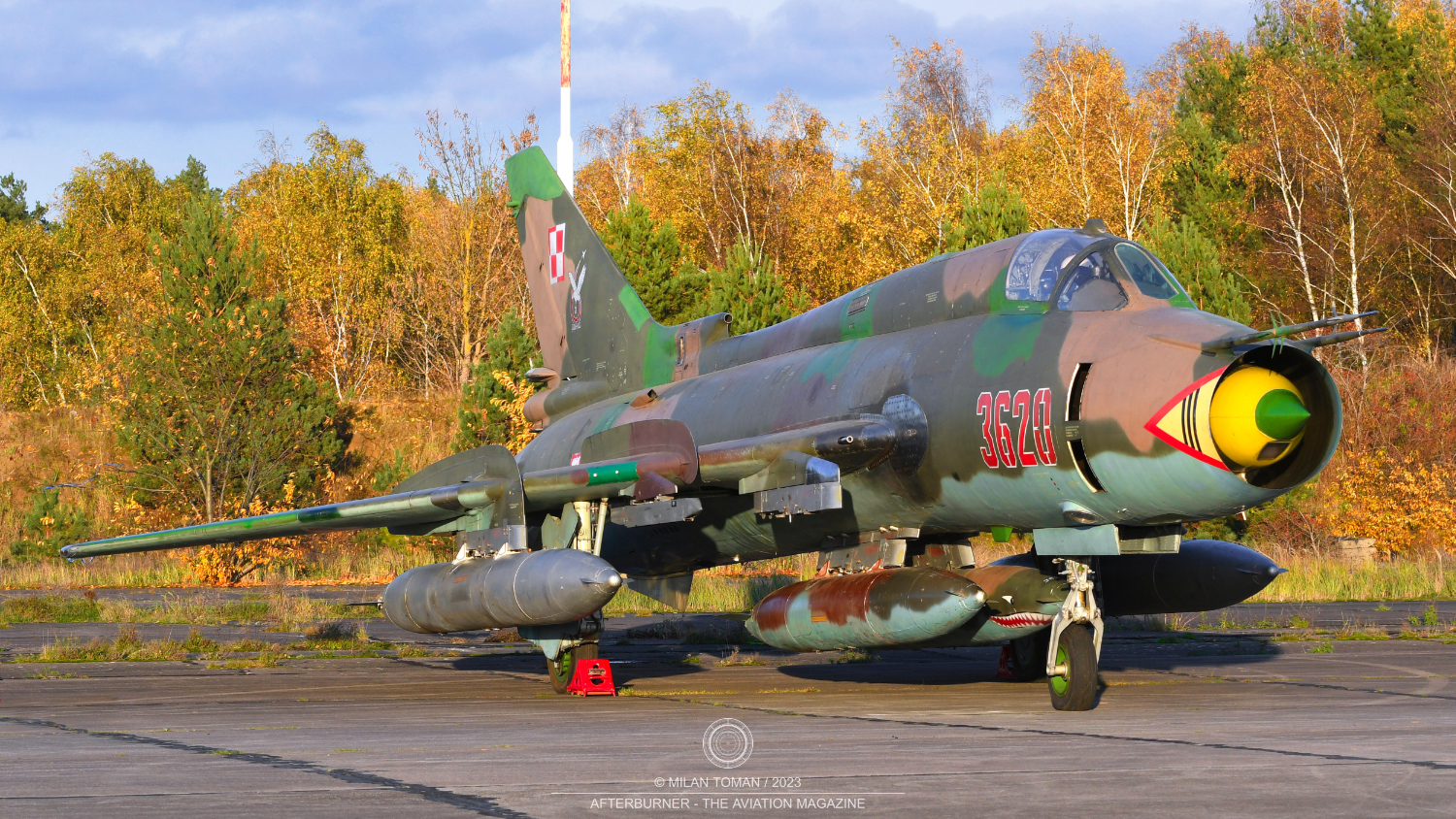 On 11 September 2025, after more than four decades of service, the Siły Powietrzne (Polish Air Force) officially retired its last examples of the Sukhoi Su-22 fighter-bomber. Once again, one of the iconic aircraft of the Cold War disappeared from European skies, marking the end of a long and fascinating chapter in aviation history.
On 11 September 2025, after more than four decades of service, the Siły Powietrzne (Polish Air Force) officially retired its last examples of the Sukhoi Su-22 fighter-bomber. Once again, one of the iconic aircraft of the Cold War disappeared from European skies, marking the end of a long and fascinating chapter in aviation history.
The origins of the Sukhoi fighter-bomber family date back to the mid-1950s, when the Su-7A swept-wing frontline fighter (NATO reporting name: Fitter-A) entered operational service with the Soviet Air Force. Although initially developed as a fighter aircraft, it saw only limited and relatively brief service, soon overshadowed by the Mikoyan-Gurevich MiG-21.
However, the Sukhoi-designed aeroplane was quickly adapted to a new role of fighter-bomber. In 1961, the Su-7B entered service and soon became the main ground-attack aircraft of the Soviet Air Force. It was also purchased, in some cases in large numbers, by Afghanistan, Algeria, Czechoslovakia, Egypt, India, Iraq, Poland and Syria.
Following the success of the Su-7B and its derivatives, the Sukhoi design bureau began work on an upgraded variant of the aircraft. The prototype of the new fighter-bomber, designated the Su-7IG (or изделие С-22И / S-22I by the manufacturer), successfully performed its maiden flight.
The aircraft, rebuilt from a production Su-7BM, was equipped with advanced radio and electronic systems and, in addition, featured one of the latest innovations in aircraft design – variable-geometry wings (hence its IG designation, an abbreviation of the Russian term изменяемая геометрия, “variable geometry”).
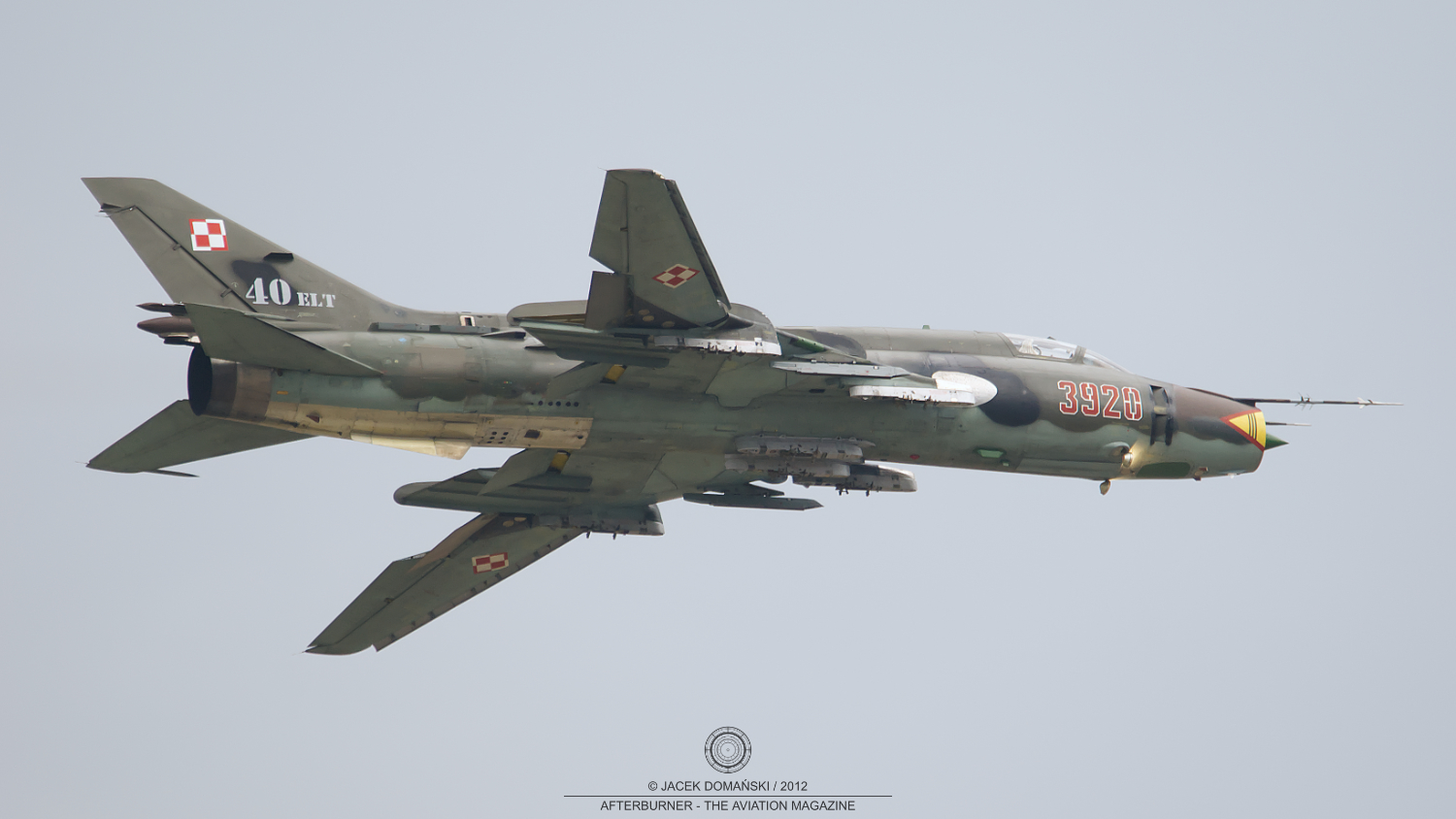
Further evaluation flights confirmed the advantages of the concept. The variable-geometry wings improved the take-off and landing characteristics of the aircraft and increased both range and flight endurance. Consequently, in November 1967, Центральный Комитет Коммунистической Партии Советского Союза (the Central Committee of the Communist Party of the Soviet Union) and Совет министров СССР (the Council of Ministers of the Soviet Union) jointly approved the aeroplane for serial production.
Two years later, the first production aircraft, officially designated the Su-17 (изделие С-32; NATO reporting name: Fitter-C), rolled off the production line at the aviation plant in Komsomolsk-on-Amur. In October 1970, the new fighter-bomber entered service with the 523rd Fighter-Bomber Aviation Regiment of the Far Eastern Military District.
The initial Su-17 design underwent several modifications and upgrades. The first, known as the Su-17M (изделие С-32М), appeared as early as 1971. It featured a redesigned wing-pivot mechanism, new fuel tanks, a radio compass and warning system, as well as a more powerful jet engine.
Ultimately, no fewer than eighteen modernised variants of the Su-17 were produced, including fighter-bomber, nuclear-capable bomber, reconnaissance and combat-trainer versions. At the end of 1972, a simplified export variant of the Su-17M – designated the Su-20 – was introduced. In the following years, further export versions appeared, collectively known as the Su-22 series.
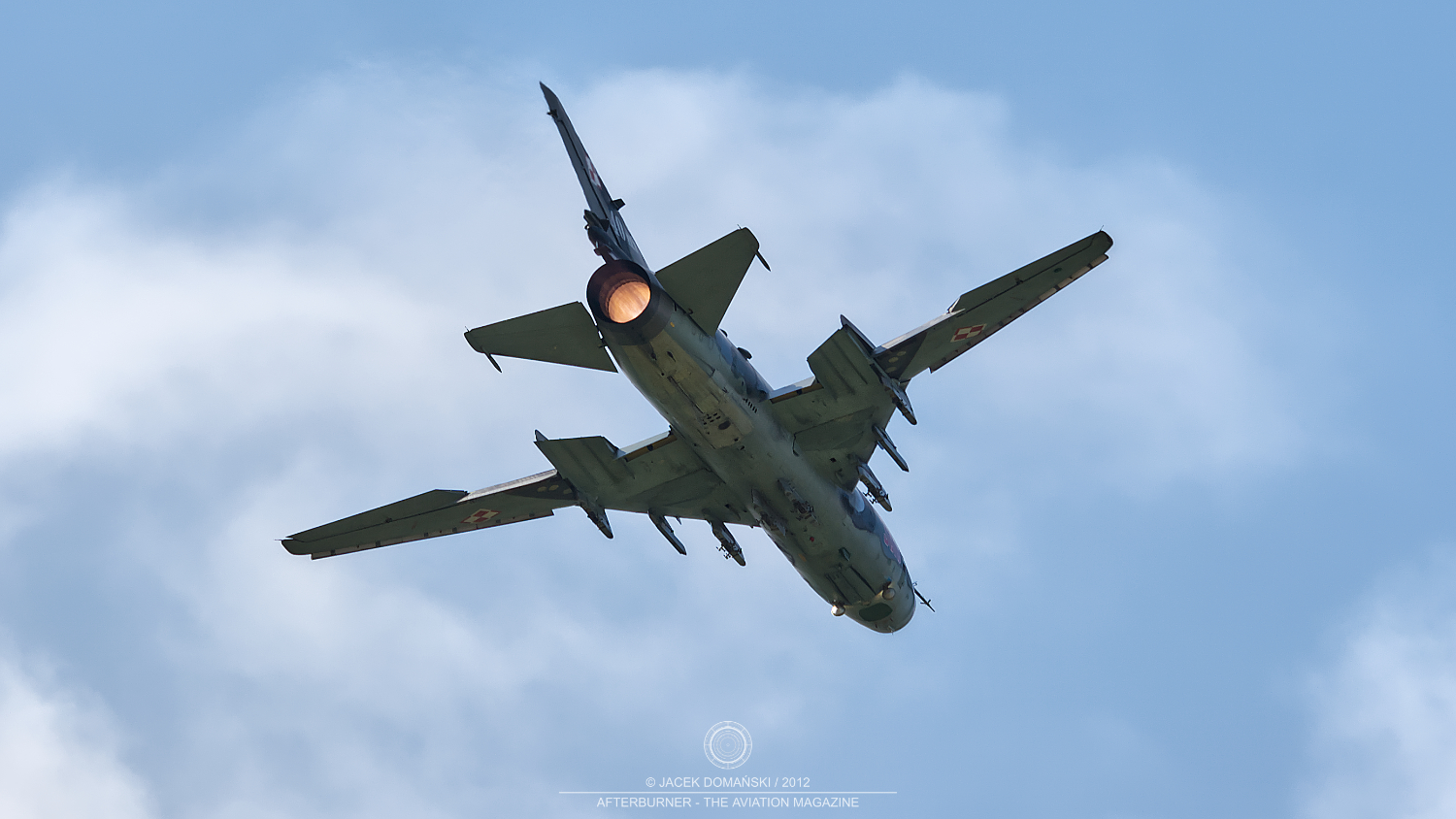
The Sukhoi Su-17 and its derivatives were operated by some twenty air forces worldwide, including those of Afghanistan, Angola, Bulgaria, Czechoslovakia, East Germany, Egypt, Iraq, Libya, Peru, Poland, Syria, Vietnam and Yemen. After the dissolution of the Soviet Union, several aircraft were taken over by newly established independent states such as Armenia, Belarus, Kazakhstan, Turkmenistan, Ukraine and Uzbekistan.
The Su-17 family boasts an impressive combat record. It began in October 1973, when Su-20s flew around one hundred sorties against Israeli targets during the Yom Kippur War. These Soviet-designed ground-attack aircraft were also used in the First Lebanon War (Operation Peace for Galilee), the Iran-Iraq War, the First Civil War in Chad, the Angolan Civil War, the Gulf War, the First Chechen War, and the civil wars in Yemen, Libya and Syria.
However, the most notable use of the Su-17/22 came during the Afghan War of 1979–1989. The Soviet jets flew both ground-attack and reconnaissance missions, operated by both Soviet and Afghan air forces. Some aircraft were also used against Pakistani forces that provided military support to the Afghan mujahideen. Interestingly, the Su-17 was the only aeroplane of the Soviet Air Force to serve in Afghanistan throughout the entire war.
Production of the Su-17 family continued for over two decades, with more than 2,800 aircraft built by 1990.
Following the end of the Cold War, the Su-17/22s were gradually withdrawn from European air forces. The Russian Air Force, the main operator of the type, retired the aircraft from active service in 1998.
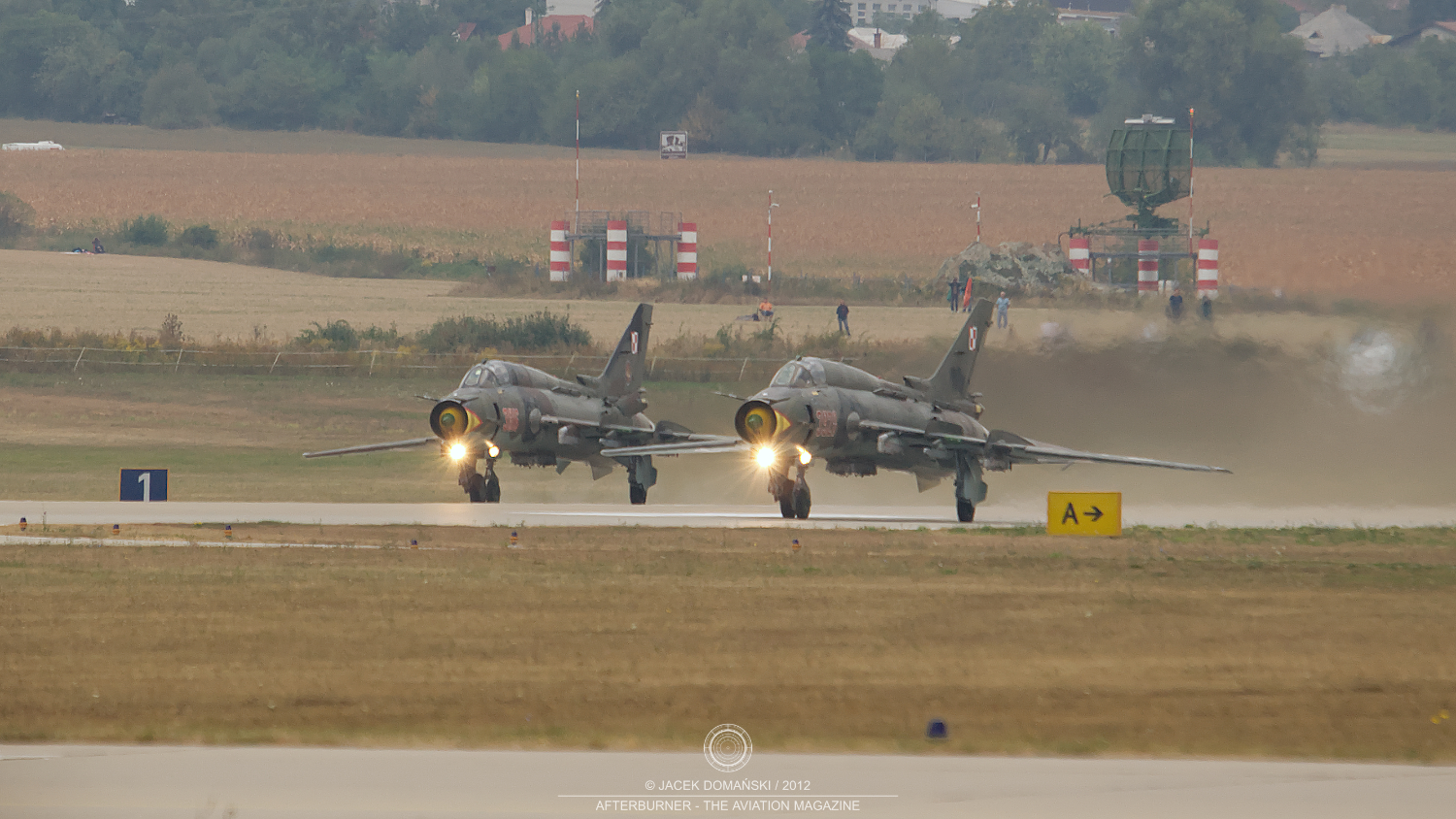
The Polish chapter of the Su-17/22 story began in 1974, when the first batch of Su-20s was delivered to 7 Brygada Lotnictwa Bombowo-Rozpoznawczego (the 7th Bomber-Reconnaissance Aviation Brigade) in Powidz. Ultimately, Poland received twenty-seven Su-20s, becoming the only European operator of that variant. In the early 1980s, Poland acquired its first Su-22s.
The introduction of the Su-22 fighter-bombers represented a major step forward for the Polish Air Force. At the time, they were still modern and capable aircraft, expected to form the backbone of Poland’s strike aviation. According to later disclosed documents from that period, Poland intended to purchase nearly two hundred Su-22s in three main versions: ground-attack, reconnaissance and training. There were even plans for a fleet of around 350 Sukhoi aircraft, including a special naval variant for the Polish Navy.
However, these ambitions were drastically curtailed by the economic crisis of the late 1980s, the dissolution of the Soviet Union and the collapse of the Warsaw Pact. The first Polish Su-22 was delivered on 28 August 1984 and, finally, Poland purchased only ninety examples of the Su-22M4 combat aircraft and twenty Su-22UM3K trainers. Additionally, rather than purchasing the dedicated Su-22M4R reconnaissance variant, Poland opted for external reconnaissance pods only, with no aircraft ever being assigned to the Navy.
It is worth mentioning that in Polish service – and among Polish aviation enthusiasts – the aircraft was affectionately nicknamed suczka (“little female dog”) or simply suka (“female dog” but also “bitch”).
After the Cold War, Poland’s Su-22s underwent their first, albeit limited, modernisation, receiving a new navigation suite, IFF system and GPS receiver.
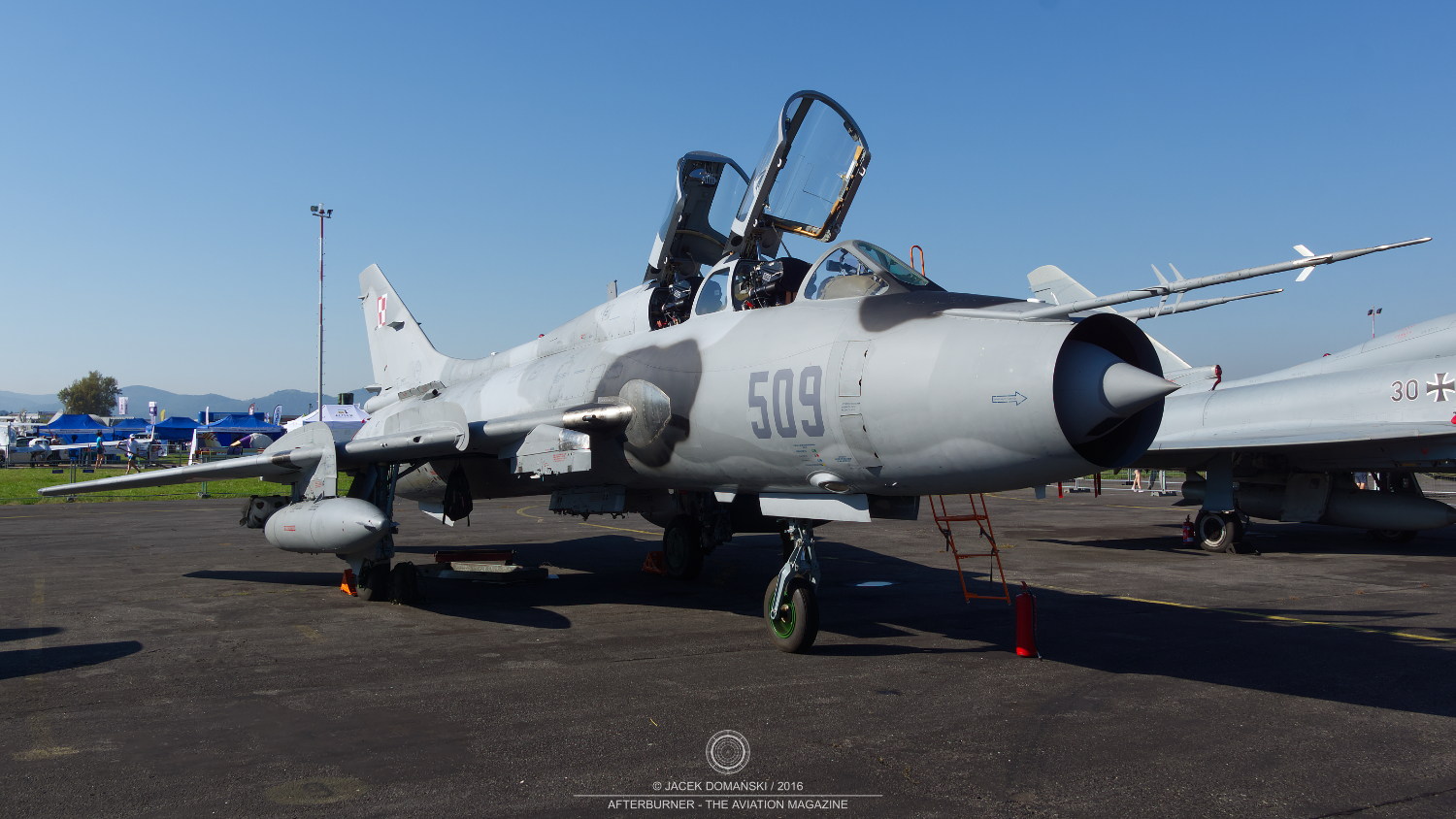
However, the end of the Cold War also meant that the Polish Air Force no longer needed such a large fleet of strike aircraft. It was clear that the days of the Su-22 family in Polish service were numbered. The Su-20s were the first to be withdrawn, and by 1997 none of them remained in service. Two years later, the phase-out of the Su-22 aircraft began. By 2005, more than half of the fleet had been retired, and only eighteen aircraft remained operational by the 2020s.
It is worth noting that, despite several upgrades, Poland’s Su-22s remained fully analogue aircraft, representing the technology of the 1990s. The reason was the Polish military regarded them as obsolete and only kept them as a temporary measure pending replacement by modern combat aircraft.
Plans to retire the Su-22 fleet have been announced several times but repeatedly postponed due to budget constraints and higher priorities. Consequently, the aircraft remained in service with only minimal upgrades – just enough to keep them airworthy without requiring any major investments.
On 17 March 2025, the fate of Poland’s Su-22s was sealed when the Chief of the General Staff of the Polish Armed Forces announced that the Cold War icon would be retired from service by the end of the year.
The official farewell ceremony took place on 11 September 2025 at the 12 Baza Bezzałogowych Statków Powietrznych (the 12th Unmanned Aerial Vehicles Base) in Mirosławiec. The day before, a formation of three Su-22s made a farewell flypast over Powidz, Piła, Świdwin and Mirosławiec – all former bases of the aircraft.

Although the Polish Su-22s had been officially withdrawn from active service, the aircraft remained airworthy, and their ultimate fate had not yet been decided. As of September 2025, the Polish Air Force’s inventory included the aforementioned eighteen operational aircraft, as well as about a dozen others with expired airframe lifespan. According to Polish press reports, some aircraft were transferred to museums and up to seven were offered for sale.
At the same time, social media and popular magazines were speculating about the possible future uses of the retired Su-22 fleet. However, most of those proposals – such as donating the jets to Ukraine or converting them into UAVs/Collaborative Combat Aircraft – were entirely unfounded. As previously mentioned, the Polish “Fitters” never underwent any significant modernisation and remained purely analogue machines. In short, they were neither capable of surviving in a modern combat environment nor worth upgrading.
The retirement of the Polish Su-22 fleet marks the disappearance of this aircraft type from European skies as Poland was the only European operator of the Su-22 in the twenty-first century. And one of the few remaining users worldwide.
Currently, aircraft from the Su-17/22 family are still officially listed in the inventories of around five air forces, including Angola, Iran, Libya, North Korea and Vietnam. However, confirmed information exists only for the Vietnam People’s Air Force – the country´s Su-22 fleet is nearing obsolescence and expected to be retired by 2027 or even earlier. The number of airworthy aircraft in the other countries is uncertain due to conflicting reports.
More images of the Polish Su-22M4 aircraft:
